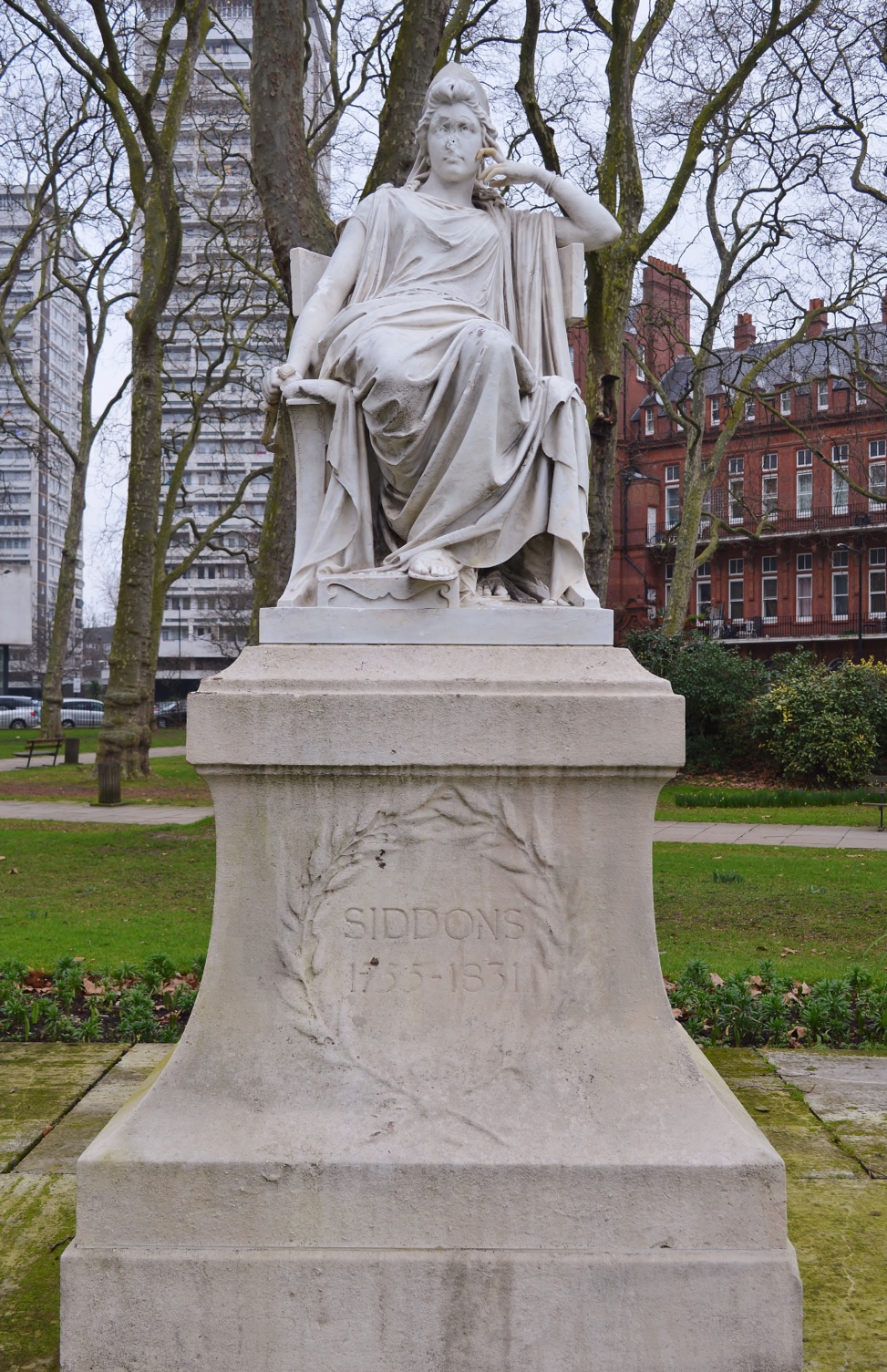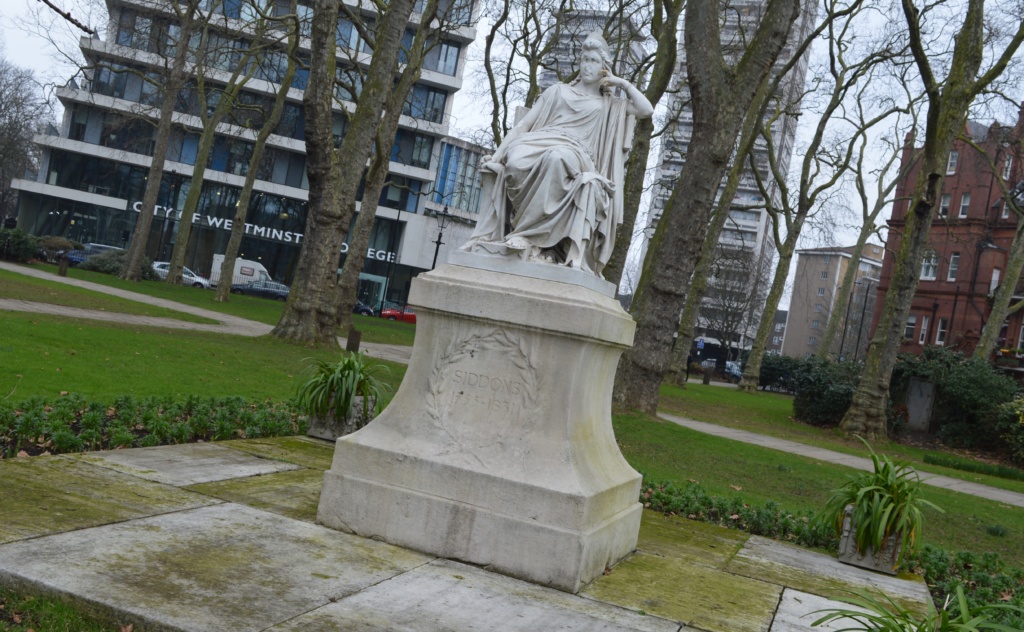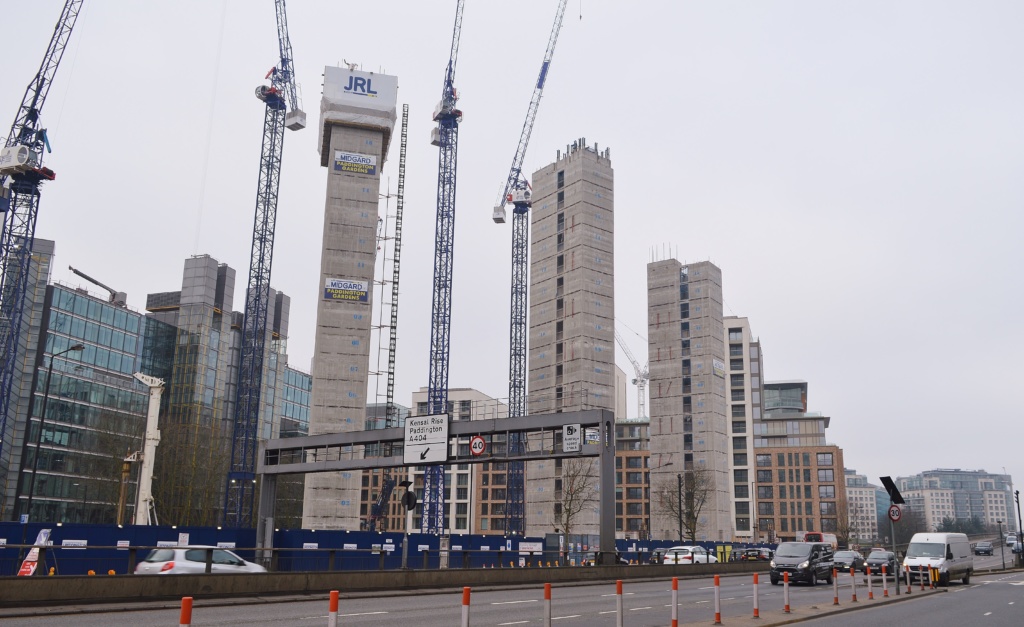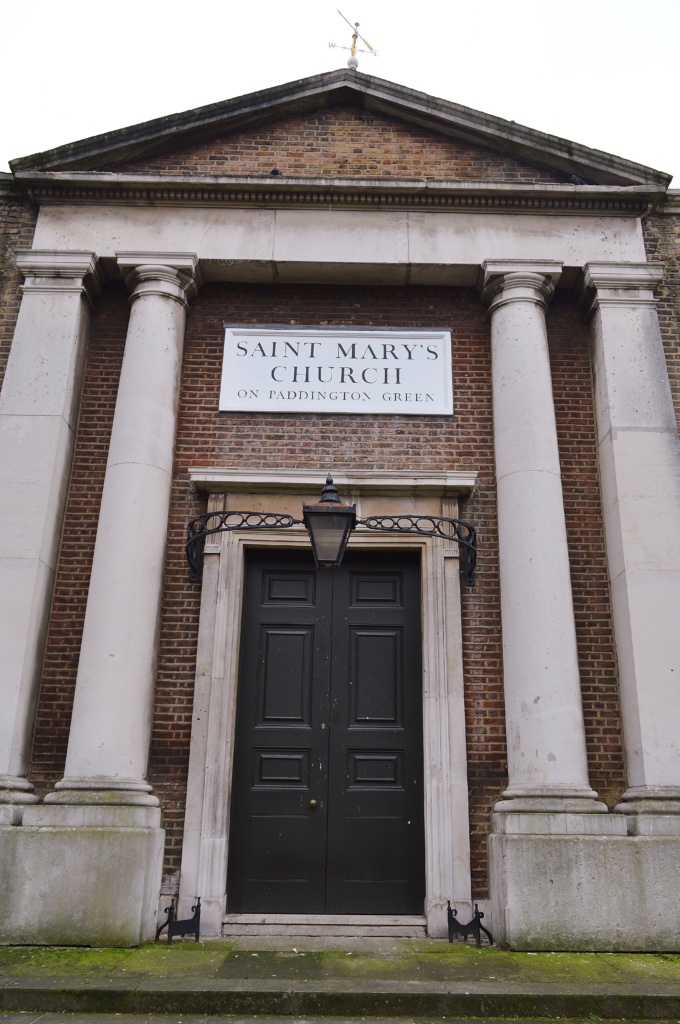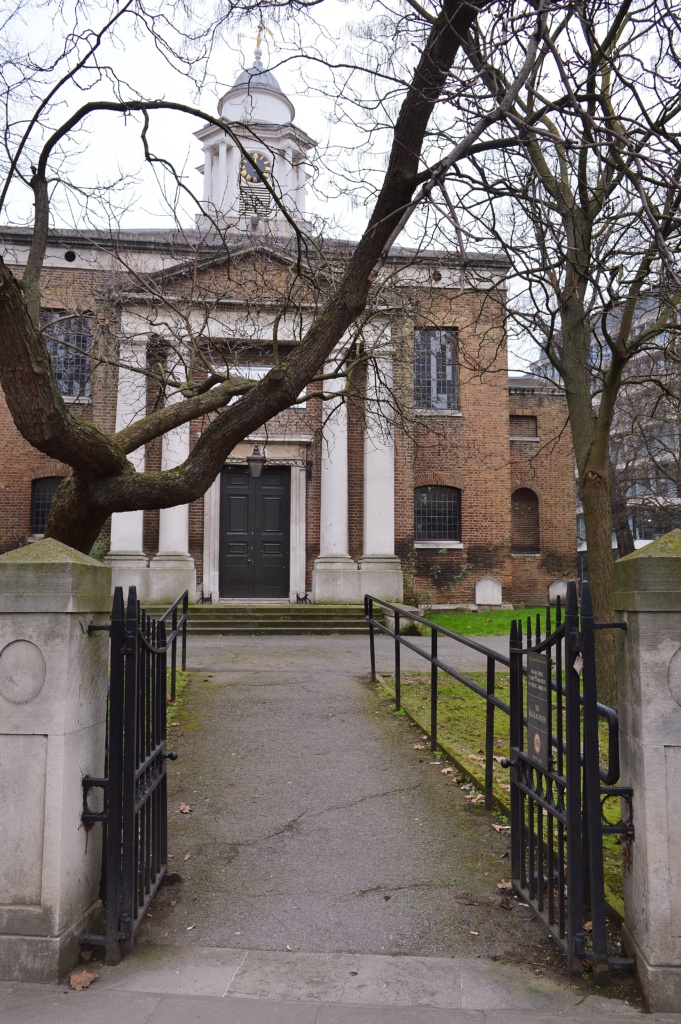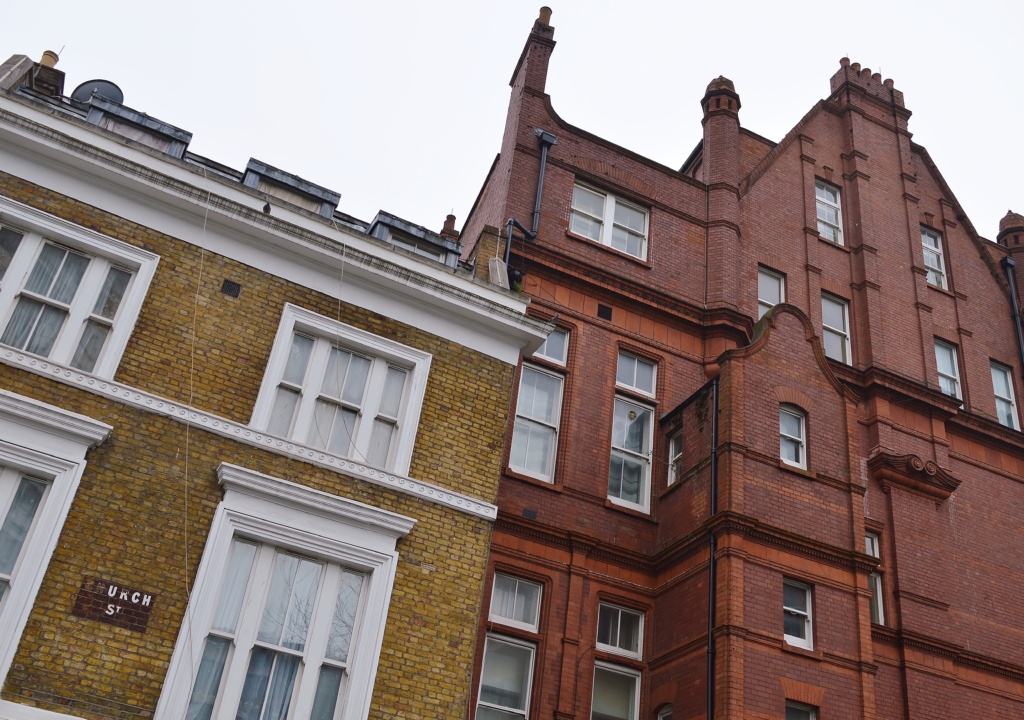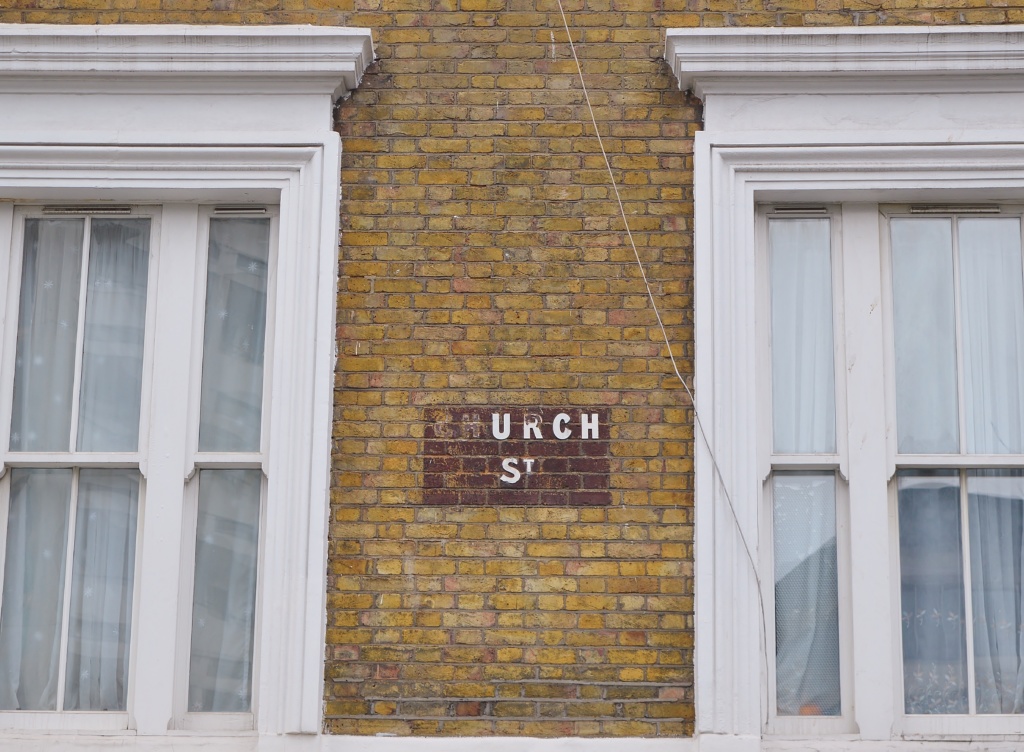Sarah Siddons sits on her marble throne looking as theatrically pissed off as only a former acting superstar (missing her nose) can.
Living through the heady years of Britain’s rise to global superpowerdom, Sarah (born 1755 in Wales and died 1831 in London) soared almost as spectacularly. She became the first internationally famous British actress; her Lady MacBeth was legendary, her portrait was painted by Joshua Reynolds and a statue of her was put in Westminster Abbey.
Life did not treat her entirely kindly. Five of her seven children died before she did and her marriage petered out to separation.
And now this indignity.
When her statue was placed in the rural Paddington Green, it was surrounded by large Georgian houses populated by wealthy people who enjoyed living close to London. Only two of those houses remain and they look almost as depressed as Sarah (whose snout was unceremoniously knocked off many years ago); they may now be halfway houses. As I gaze at the houses two people down on their luck came out, drawing deep on their fags and coughing up large globs of phlegm which they discharged onto the street in front of me . Lovely.
Sarah can’t even see the old houses; her gaze is fixed on the many laned mundanity of the Harrow Road and across it at the intimidating mess of towers blocks sprouting from beyond.
If she could turn her head, Sarah would be surprised by the modernistic City Of Westminster College that has sprung up in recent times.
St Mary’s Church on Paddington Green – so familiar to many generations of Londoners – would be a rare familiar site to Mrs Siddons as it opened in her life time in 1788 and is where she was buried at the end of her life.
On the opposite side of the green is a lovely doorway to a red brick block of flats which are theatrical in their own right.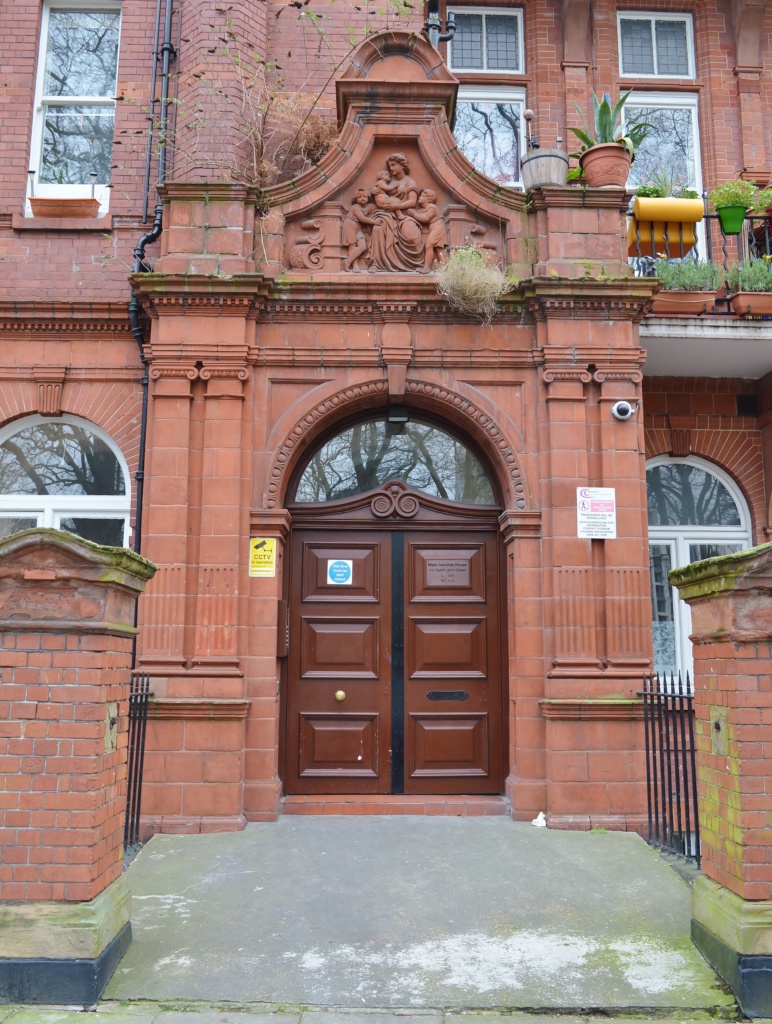
The flats border Church Street that leads down to the market.
Sarah would have known and walked along Church Street on her way to St Mary’s. She may have known the market that opened in 1830 a year before she died.
